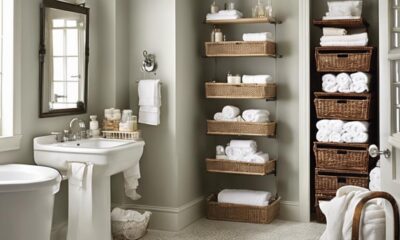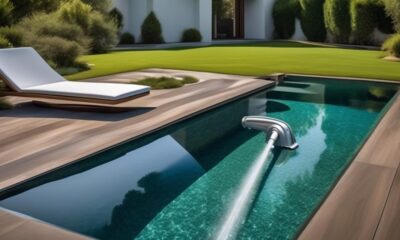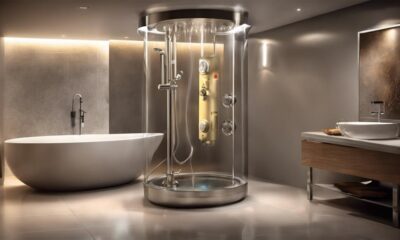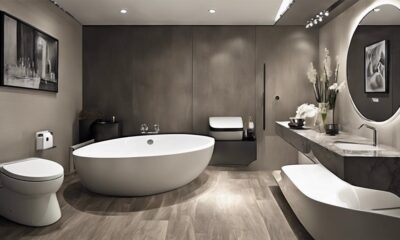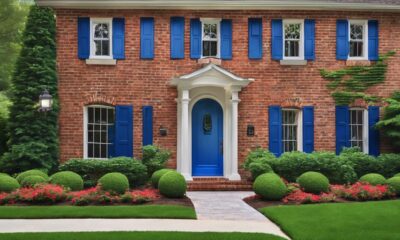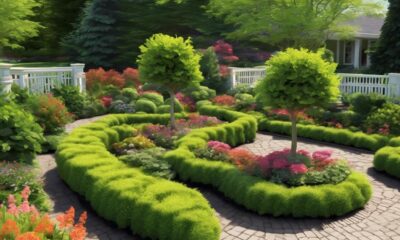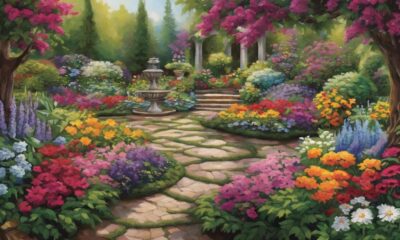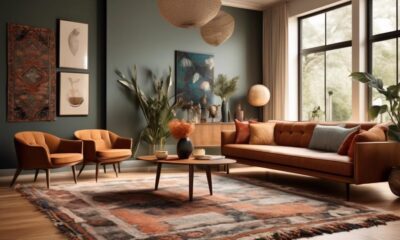Architecture Home Styles
Why Choose Shingles: Advantages and Disadvantages
Opt for asphalt shingles for your roof with a mix of benefits and drawbacks that may surprise you – find out more below.
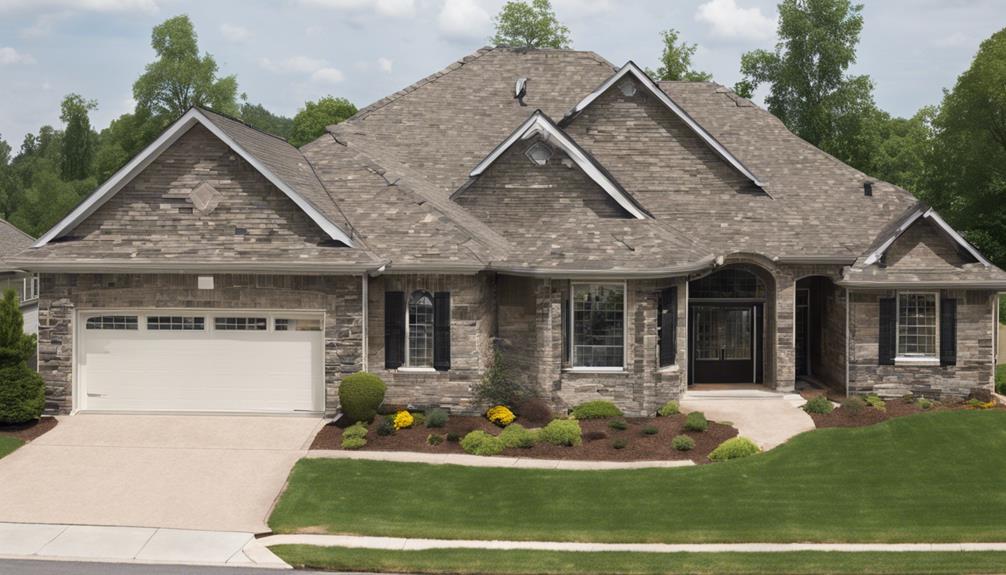
When considering roofing options, it's intriguing how asphalt shingles strike a balance between pros and cons.
The advantages of shingles, like affordability and easy installation, make them appealing to many.
However, the vulnerabilities they pose, such as wind damage and maintenance needs, should not be overlooked.
Stay tuned to uncover the full spectrum of reasons why asphalt shingles remain a top choice for homeowners seeking a blend of practicality and aesthetic appeal.
Key Takeaways
- Asphalt shingles offer cost-effective, customizable, and easy-to-install roofing options.
- Durability requires maintenance to combat mold, wind damage, and balance affordability with longevity.
- Aesthetically, shingles provide a variety of color options and design choices for versatile looks.
- Environmental impacts necessitate proper maintenance, disposal considerations, and recycling efforts for sustainability.
Advantages of Shingles
Asphalt shingles present a cost-effective roofing option that delivers a harmonious blend of affordability and quality. These versatile roofing materials offer numerous advantages for homeowners.
One of the primary benefits of asphalt shingles is their ease of installation. Thanks to their lightweight nature and standardized sizes, they can be installed quickly and efficiently, reducing labor costs and installation time. Additionally, the easy installation process makes them an attractive option for homeowners looking to replace or upgrade their roofs without extensive construction delays.
While asphalt shingles offer many advantages, it's essential to note that they're vulnerable to wind damage. In areas prone to high winds or storms, proper installation techniques and regular maintenance are crucial to prevent shingle loss. Despite this vulnerability, the customizable nature, cost-effectiveness, and overall protection provided by asphalt shingles make them a popular choice for residential roofing projects.
Durability of Shingles
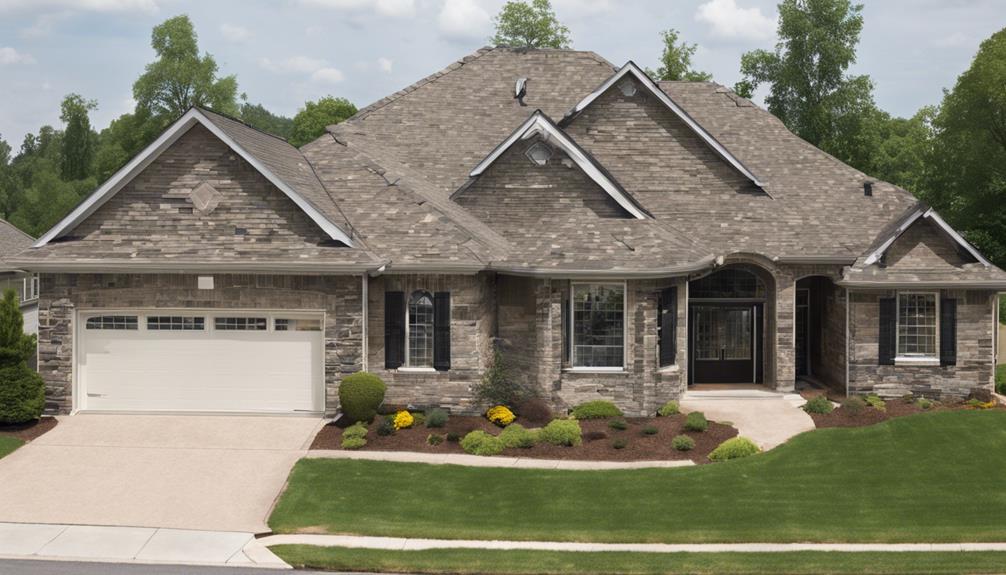
With a typical lifespan of 15-30 years, the durability of asphalt shingles is influenced by various factors such as proper installation and maintenance practices. When considering the durability of shingles, it's essential to understand the impact of wind damage, maintenance routines, and susceptibility to mold and mildew growth. Here are key points to consider:
- Wind Damage: Improper installation can make asphalt shingles susceptible to wind uplift and damage, reducing their lifespan significantly.
- Maintenance: Regular inspections and timely repairs can extend the durability of asphalt shingles by addressing issues promptly.
- Mold and Mildew: Shaded areas on roofs can promote mold and mildew growth on asphalt shingles, leading to deterioration over time.
- Lifespan: Despite a shorter lifespan compared to other materials, asphalt shingles provide a cost-effective balance between durability and affordability.
- Affordability: The initial cost and long-term durability of asphalt shingles make them a popular choice for many homeowners seeking a balance between cost and longevity.
Cost-Effectiveness of Shingles
Considering the economic benefits of asphalt shingles, their cost-effectiveness makes them a practical choice for homeowners seeking quality roofing solutions within a reasonable budget. Asphalt shingles stand out as an affordable option in the roofing market, providing a budget-friendly solution without compromising on durability.
The affordability of asphalt shingles not only makes them accessible to a wide range of homeowners but also allows for quality roofing that fits within financial constraints. This balance between cost and performance ensures that asphalt shingles offer good value for the investment, making them a popular choice for many.
Moreover, the customization options available with asphalt shingles, including a variety of colors and textures, enhance their appeal as a cost-effective roofing material. Additionally, the easy replacement of damaged shingles contributes to the overall cost-effectiveness of asphalt roofing, as maintenance is straightforward and doesn't incur significant additional costs.
Aesthetics of Shingles
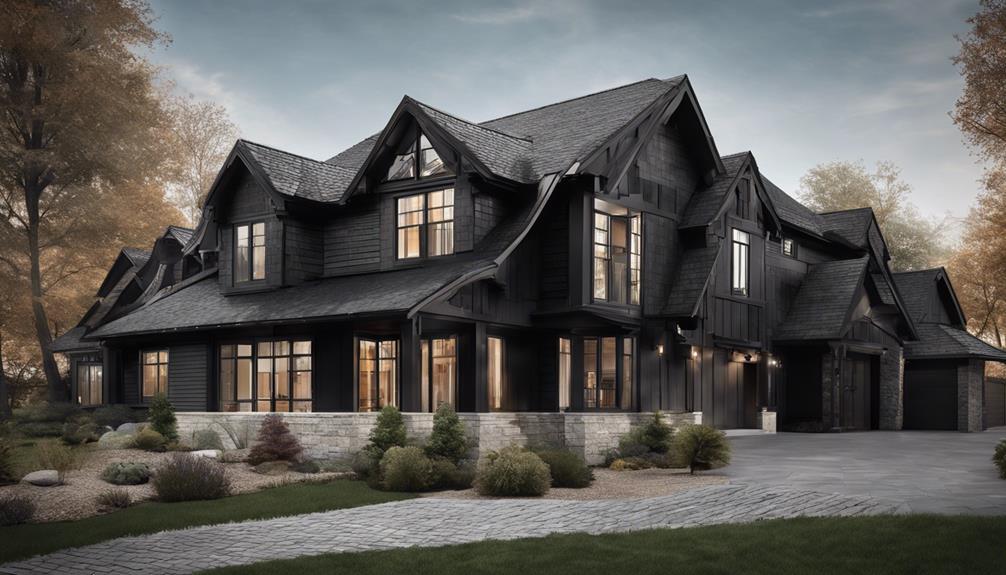
When considering the aesthetics of shingles, homeowners are presented with a wide array of color options to choose from, allowing for customization to suit their preferences. The versatile design choices of asphalt shingles cater to various architectural styles, providing flexibility in complementing different home designs.
Additionally, the texture of asphalt shingles not only adds depth but also enhances the overall curb appeal of a house.
Color Options Available
A wide array of color options is available for asphalt shingles, ranging from subtle hues like brown and gray to more vibrant choices such as red and blue. Different shingle colors provide homeowners with the flexibility to match their roofing to the style of their home and surroundings. Here are some key points to consider regarding shingle colors:
- Lighter shingle colors can reflect sunlight, reducing heat absorption and potentially lowering cooling costs.
- Darker shingle colors offer a bold contrast, enhancing the curb appeal of the home by adding visual depth to the roof.
- Blended colors and patterns are available from certain manufacturers, mimicking the appearance of natural materials like wood or slate for a sophisticated look.
Versatile Design Choices
With a plethora of design choices available, asphalt shingles cater to various aesthetics, offering homeowners a versatile selection to enhance the visual appeal of their roofs. Asphalt shingles come in a wide array of colors, styles, and textures, allowing for customization to suit individual preferences. The versatility of roof shingles extends to different architectural designs, ensuring a seamless integration with various home styles. Whether you prefer a traditional 3-tab look, a more upscale architectural shingle, or a luxurious option, there is a design choice to meet your needs. Additionally, the ability of shingles to mimic the appearance of high-end materials like slate or wood shakes provides a cost-effective yet visually appealing alternative for homeowners.
| Colors | Styles | Textures |
|---|---|---|
| Varied | Architectural, 3-tab, Luxury | Diverse |
| Customizable | Traditional to Upscale | Unique |
| Complementary | Versatile | Appealing |
Enhances Curb Appeal
Enhancing the curb appeal of a home, asphalt shingles offer a diverse range of customizable styles and colors to elevate the aesthetics of the property. Here's how they achieve this:
- Customizable Styles: Asphalt shingles come in various textures and designs to complement any architectural style.
- Wide Color Selection: These shingles provide an array of colors to suit different preferences and exterior color schemes.
- Increased Property Value: The aesthetic appeal of shingles can enhance the overall value of a property.
- Classic Look: Many homeowners appreciate the traditional and timeless appearance that shingles offer.
- Versatile Coordination: Shingles' versatility allows for seamless coordination with other exterior elements, enhancing the overall visual appeal of the home.
Installation Ease of Shingles
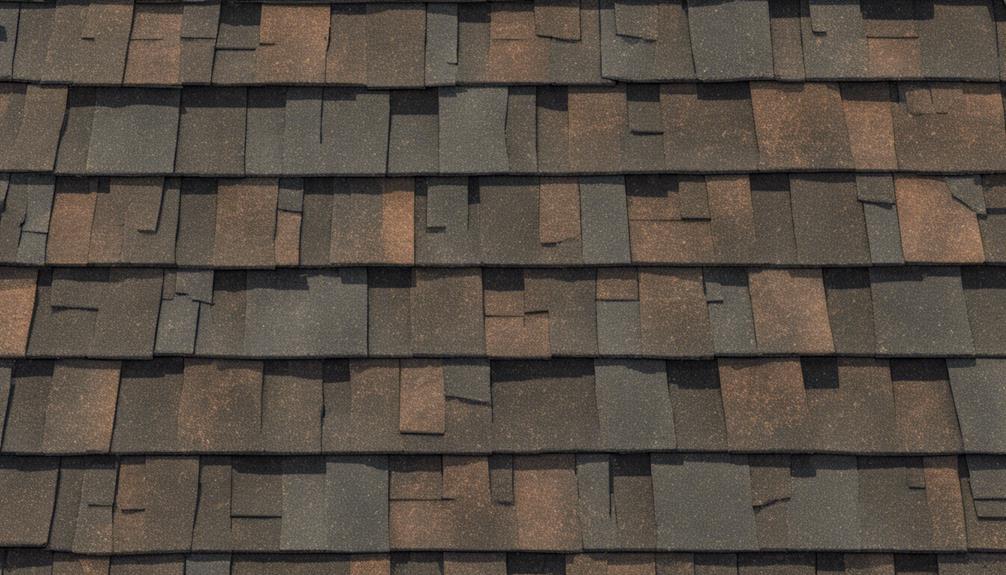
The installation of asphalt shingles stands out for its straightforward process and efficient handling, making it a preferred choice for many roofing projects. Asphalt shingles are an easy and affordable roofing material due to their lightweight nature, which reduces labor costs. When installed correctly, asphalt shingles offer an economical option for roofing installation.
The simplicity in handling asphalt shingles ensures that they can be quickly and efficiently installed, saving both time and money for homeowners. Their manageable size allows for easy transportation to the rooftop, further streamlining the installation process. With minimal labor costs and a quick installation time, asphalt shingles provide a convenient and cost-effective solution for roofing needs.
Homeowners looking for a hassle-free and efficient roofing material will find that asphalt shingles offer a practical and budget-friendly choice for their projects.
Disadvantages of Shingles
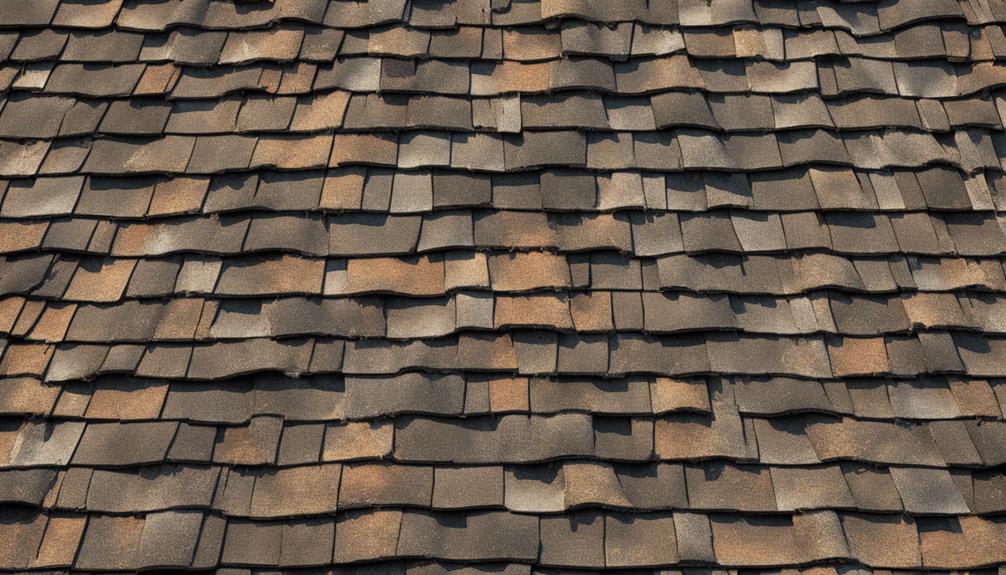
When considering the disadvantages of shingles, we must take into account the cost considerations which can be significant compared to other roofing options.
Additionally, the maintenance requirements for asphalt shingles are higher, requiring regular inspections and upkeep to ensure their performance.
Moreover, another drawback is the limited color options available with asphalt shingles, which might restrict design choices for some homeowners.
Cost Considerations
Considering the cost implications associated with shingles, it's crucial to understand the long-term financial commitments involved in their maintenance and potential drawbacks. Shingles, while initially cost-effective, can lead to increased expenses over time due to their shorter lifespan and maintenance needs. When evaluating the cost considerations of shingles, keep in mind their lower energy efficiency compared to alternatives like metal roofing, which can result in higher energy bills. Additionally, shingles are susceptible to wind damage if not installed correctly, necessitating regular inspections and potential repairs. Moreover, shaded areas on shingled roofs may foster mold and mildew growth, requiring proactive maintenance measures to prevent further issues.
- Lower energy efficiency compared to other roofing materials
- Susceptibility to wind damage
- Potential for mold and mildew growth in shaded areas
- Shorter lifespan leading to long-term maintenance costs
- Initial cost savings may be offset by ongoing maintenance expenses
Maintenance Requirements
Asphalt shingle roofs demand regular maintenance to ensure their longevity and performance, including inspections, prompt shingle replacements, and periodic cleaning to prevent mold and mildew growth. It is essential to adhere to proper maintenance practices to extend the lifespan of asphalt shingle roofs. Seeking guidance from professionals can provide valuable insights into maintaining the roof's integrity. Additionally, considering energy-efficient roofing options alongside asphalt shingles can enhance the overall efficiency of the roofing system. Below is a table summarizing the key maintenance requirements for asphalt shingle roofs:
| Maintenance Requirements | Details |
|---|---|
| Regular Inspections | Ensure early detection of issues |
| Prompt Replacement | Prevent water leaks and structural damage |
| Cleaning Shingles | Prevent mold and mildew growth |
| Proper Maintenance Practices | Extend the lifespan of the roof |
Limited Color Options
With a limited color palette compared to alternative roofing materials, asphalt shingles may restrict homeowners to traditional hues like grays, browns, and blacks. This limitation in color options can impact the aesthetic customization of the roof, particularly for those seeking vibrant or unconventional colors. Homeowners desiring specific or unique color choices may find the selection of asphalt shingles lacking and may need to explore alternative roofing materials for a wider variety.
While asphalt shingle roofing offers durability and affordability, the lack of vibrant and unconventional colors could be a drawback for individuals looking to make a bold statement with their roof's appearance.
- Asphalt shingles offer a limited color palette compared to other roofing materials.
- Color choices may be restricted to traditional hues like grays, browns, and blacks.
- Some homeowners seeking vibrant or unique colors may find the selection of asphalt shingles lacking.
- Limited color options can impact the overall aesthetic customization of the roof.
- Homeowners desiring specific or unconventional colors may need to explore alternative roofing materials for more variety.
Maintenance Requirements of Shingles
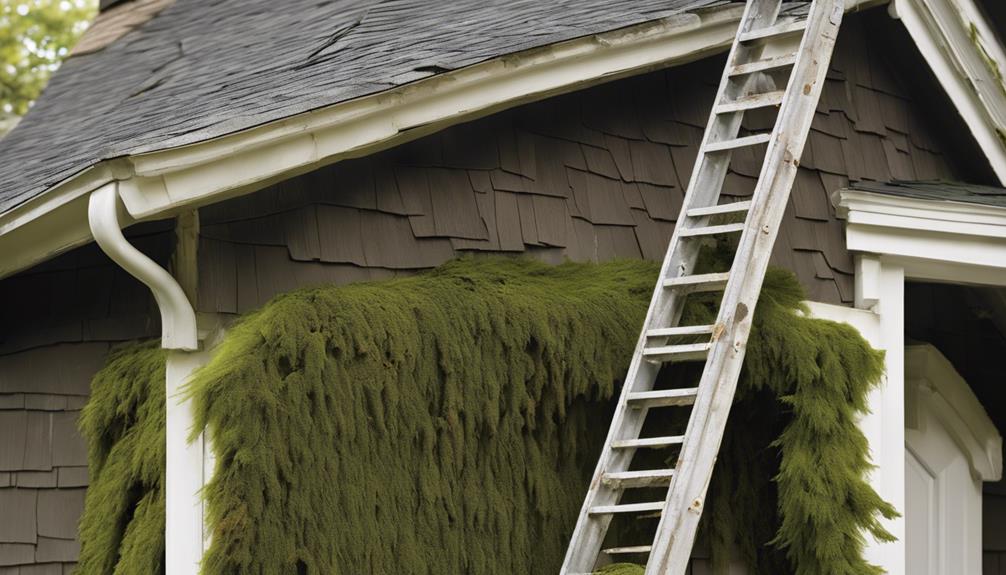
Regular inspections play a crucial role in identifying any damage or issues with shingles that may require maintenance. Prompt replacement of damaged shingles is essential to prevent further damage to the roof's structure and integrity.
Additionally, cleaning the shingles regularly is vital in preventing the growth of mildew and preserving their appearance over time. Seeking advice from professionals for maintenance tips can significantly extend the lifespan of shingles and ensure they perform optimally.
It's also worth considering energy-efficient roofing options that can help reduce the maintenance requirements of shingles in the long run. By staying proactive and addressing maintenance needs promptly, homeowners can prolong the life of their shingles and protect their investment in the roof.
Regular care and attention to the maintenance requirements of shingles can ultimately save costs and prevent more significant issues down the line.
Environmental Impact of Shingles
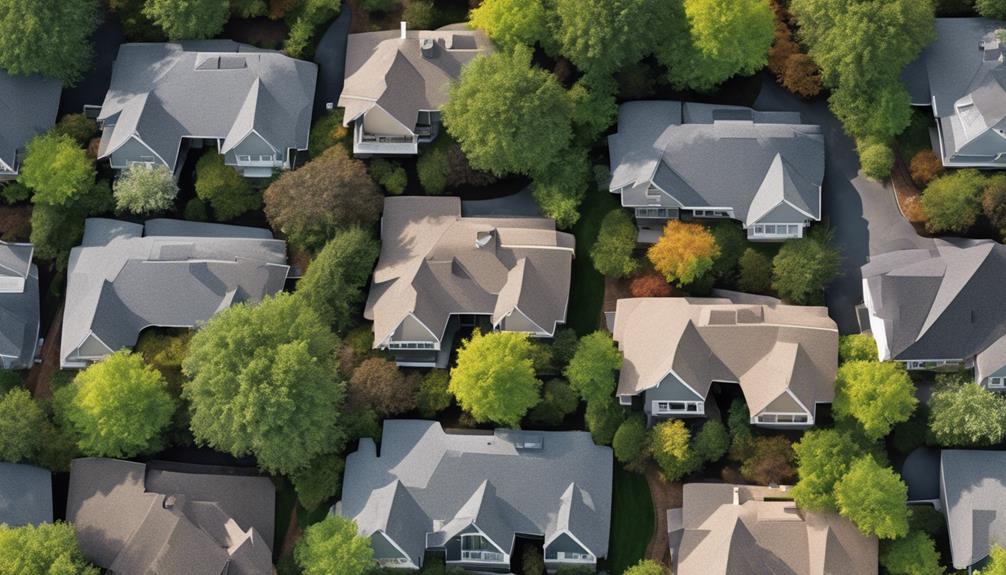
Considering the environmental impact of shingles is paramount when evaluating roofing materials for sustainability and long-term ecological consequences. Asphalt shingles, commonly used for roofing, are predominantly made from petroleum-based materials, which intensifies the environmental impact by contributing to oil extraction and processing.
The manufacturing process of asphalt shingles also releases volatile organic compounds (VOCs) into the environment, impacting air quality. Disposing of old asphalt shingles poses waste management challenges due to their slow biodegradability. Furthermore, the high demand for asphalt shingles accelerates the depletion of natural resources used in their production.
However, to combat these issues, recycling programs for asphalt shingles have been established to reduce environmental impact and promote sustainability within the roofing industry. These programs play a crucial role in addressing the environmental concerns associated with the use of asphalt shingles, offering a more eco-friendly approach to roofing materials.
Frequently Asked Questions
What Are the Advantages of a Shingle Roof?
Shingle roofs provide numerous benefits. They're cost-effective, easy to install, and come in various styles to complement any home. The quick installation process sets them apart from other materials.
Additionally, their durability and customizable options make them a popular choice for homeowners seeking both functionality and aesthetic appeal. The advantages of shingle roofs make them a versatile and practical option for many households.
Why Choose Shingles?
We choose shingles for their affordability, ease of installation, and aesthetic appeal that complements any home style.
Shingles offer a customizable roofing option that provides effective protection against the elements for up to 30 years with proper maintenance.
Despite some issues like wind vulnerability and shorter lifespan, shingles remain a popular choice for homeowners seeking a cost-effective and convenient roofing solution that enhances the overall look of their property.
Why Are Shingles Good?
Shingles are good because they offer a balance of quality and affordability. They come in various styles and colors to complement any home. Easy to handle, install, and replace, they save time and labor costs.
Shingles enhance a home's aesthetic appeal while providing effective weather protection. Their popularity stems from customizable options, cost-effectiveness, and ease of maintenance.
What Are the Pros and Cons of Architectural Shingles?
Architectural shingles offer enhanced durability, lasting 25-30 years with increased wind and impact resistance. They provide a more stylish roof appearance with various color and style options. While they may have a higher initial cost, these shingles can boost a home's overall value.
The pros of architectural shingles include longevity, durability, aesthetics, and potential property value increase. However, their cons may involve a higher upfront investment compared to traditional shingles.
Conclusion
In conclusion, while asphalt roof shingles may have their drawbacks, they offer a balanced combination of affordability, variety, and ease of installation. Their durability and cost-effectiveness make them a popular choice for many homeowners.
Despite the need for regular maintenance and potential environmental impact, the aesthetic appeal and overall value of shingles make them a practical choice for roofing solutions.
- About the Author
- Latest Posts
Introducing Ron, the home decor aficionado at ByRetreat, whose passion for creating beautiful and inviting spaces is at the heart of his work. With his deep knowledge of home decor and his innate sense of style, Ron brings a wealth of expertise and a keen eye for detail to the ByRetreat team.
Ron’s love for home decor goes beyond aesthetics; he understands that our surroundings play a significant role in our overall well-being and productivity. With this in mind, Ron is dedicated to transforming remote workspaces into havens of comfort, functionality, and beauty.
Architecture Home Styles
Make My House Look Less Flat: 10 Easy DIY Tricks
Kick your flat-front house up a notch with these 10 easy DIY tricks that will add depth and character – your home will never look the same!
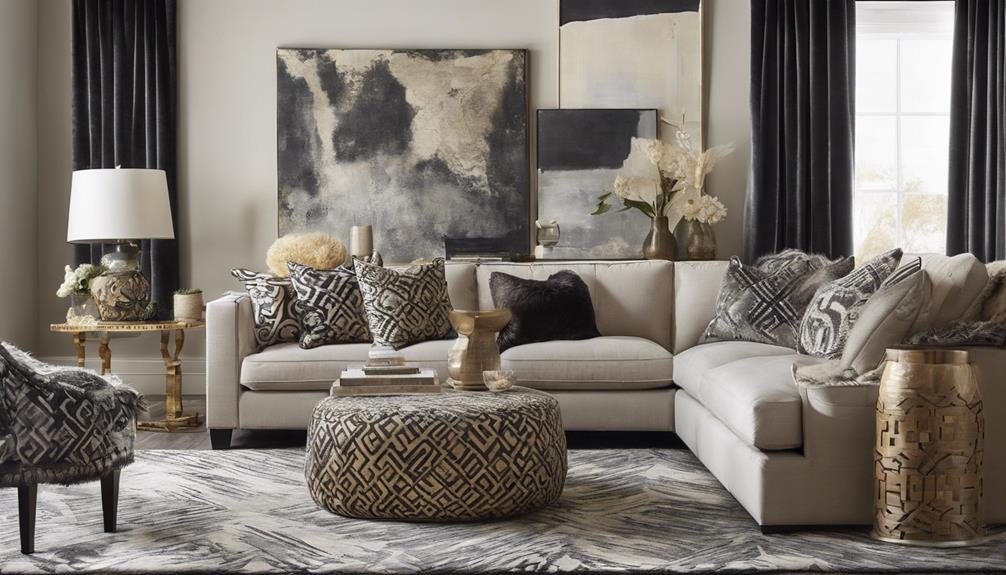
When pondering on how to make our homes appear less flat, we often seek simple solutions that can spruce up our space without breaking the bank.
But what if we told you there are ten easy DIY tricks that can transform your flat-front house into a stylish abode?
From updating light fixtures to revamping the entryway, these tips range from quick fixes to more involved projects, providing a spectrum of options for adding depth and character to your home's exterior.
Key Takeaways
- Upgrade lighting fixtures for a modern and sophisticated ambiance.
- Opt for neutral tones and minimalist decor for a harmonious look.
- Implement budget-friendly updates like faux built-ins and hardware refresh.
- Enhance curb appeal with landscaping, colorful flowers, and strategic lighting.
Update Old Light Fixtures
Let's shed some new light on your space by revamping those outdated fixtures with a modern twist. Upgrading to modern pendant lighting can bring a contemporary flair to your home effortlessly. Swapping out old pendant lights or lamps for sleek, minimalist designs can completely transform the ambiance of a room. By embracing modern pendant lighting trends, you not only illuminate your space but also add a touch of sophistication and style.
Updating light fixtures is a cost-effective way to revamp the aesthetic of any room. Consider mixing different types of light fixtures to create a unique and personalized lighting design that suits your taste. Whether you prefer a bold statement piece or a subtle, elegant fixture, modern pendant lighting offers a wide range of options to choose from. With a simple change in light fixtures, you can elevate the overall look and feel of your space, making it more inviting and visually appealing.
Embrace Neutral Tones
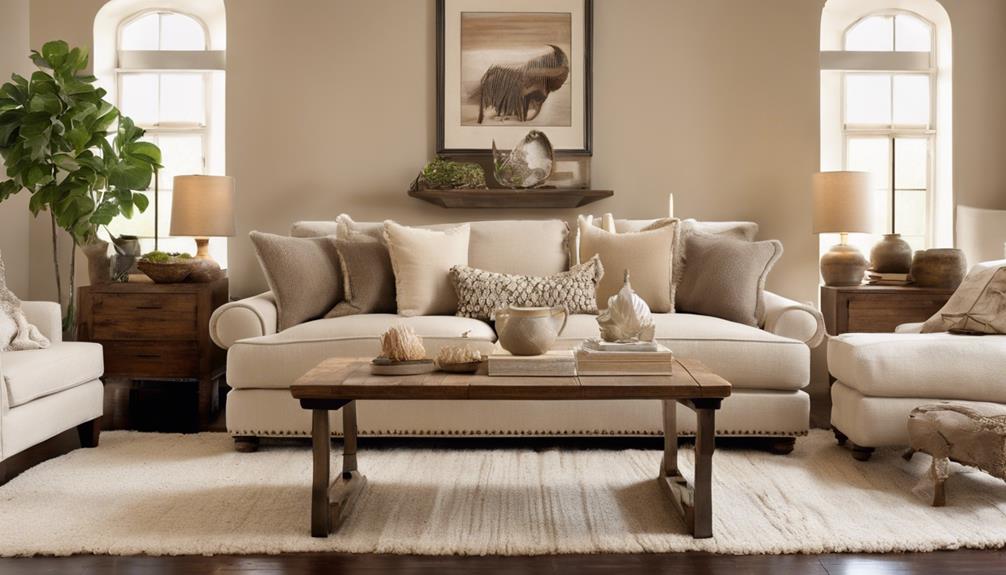
Let's talk about how embracing neutral tones can transform a space effortlessly.
Earthy color palettes and minimalist decor choices can bring a sense of calm and sophistication to any room.
Earthy Color Palettes
Embracing neutral tones in your home decor palette can effortlessly exude sophistication and elevate the overall ambiance of your living spaces. Earthy color palettes, such as warm browns and soft greens, offer a timeless and elegant look that can make your space feel more luxurious.
These natural hues, whether on walls, furniture, or decor pieces, contribute to a sense of tranquility and harmony in your home. By incorporating earthy colors, you can create a high-end design that feels both welcoming and stylish.
Additionally, neutral color schemes make it easier to mix and match furniture and accessories, allowing for a cohesive and polished look throughout your living areas. Experimenting with earthy tones can truly transform your home into a sanctuary of comfort and sophistication.
Minimalist Decor Choices
To maintain the sophisticated and elegant ambiance established with earthy color palettes, our focus now shifts towards the allure of Minimalist Decor Choices accentuated by the embrace of neutral tones.
Embracing neutral colors such as whites, creams, and grays can transform your space into a minimalist haven. These hues have the power to open up a room, creating a sense of airiness and expansiveness.
By integrating neutral tones into your furniture, walls, and decor, you can achieve a clean and cohesive aesthetic that exudes timelessness and elegance. Minimalist decor in neutral shades provides a versatile backdrop that complements any style or theme seamlessly.
The calming and serene atmosphere created by neutral palettes is perfect for those seeking a modern and uncluttered feel in their home.
Create Faux Built-Ins
Enhance your space effortlessly by incorporating faux built-ins using bookcases or DIY bookshelves to create a custom look without the hefty price tag. By mimicking built-ins with strategically placed bookcases, you can add depth and architectural interest to an otherwise flat-front house. Look into IKEA bookshelf hacks and tutorials for cost-effective ideas on achieving the appearance of built-in shelving without breaking the bank.
Consider framing doors or windows with bookcases to give the illusion of custom carpentry work. Placing bookcases on each side of a fireplace or TV can establish a cohesive and visually appealing built-in look. To further enhance the illusion, ensure the bookcases have matching trim and paint colors to seamlessly blend them into the space for a high-end finish. This simple and budget-friendly trick can transform your space, giving it a tailored and sophisticated feel.
Refresh Hardware
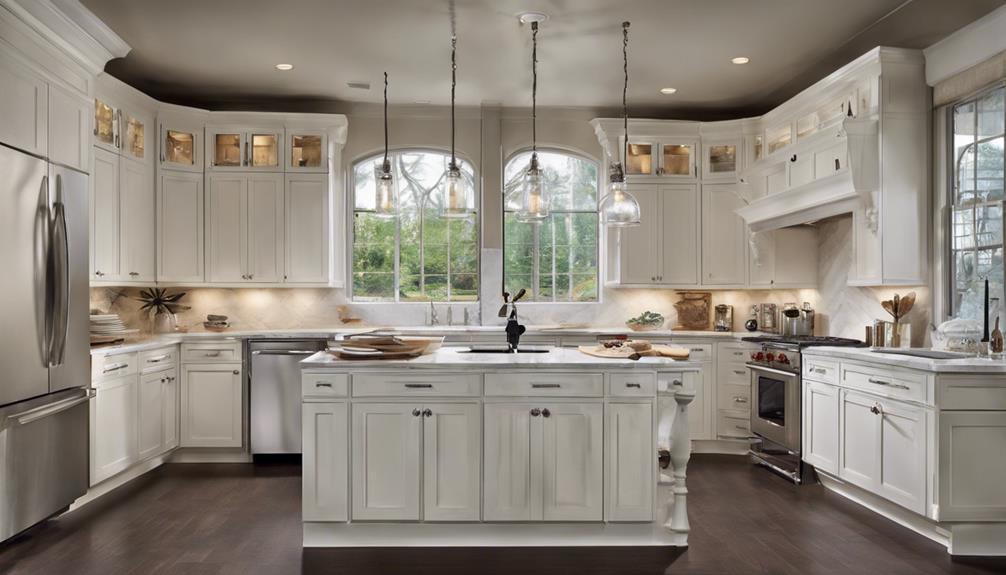
Updating your hardware, such as drawer pulls and knobs, can instantly revitalize the appearance of cabinets and furniture. When it comes to front doors, consider swapping out the old, worn-out hardware for sleek and modern handles or locks. Opting for finishes that complement the overall style of your home, whether it's a stone cottage or a brick townhouse, can significantly enhance its curb appeal. Coordinating the hardware finishes throughout your house creates a cohesive and polished look that ties everything together seamlessly.
In addition to cabinet hardware, don't overlook the impact of refreshing the hardware in other areas of your home. Swapping dated towel bars and hooks in the bathroom for more contemporary styles can elevate the room's aesthetic and bring a touch of luxury. These affordable and quick hardware upgrades offer a cost-effective way to update your home without the need for a major renovation, giving your space a fresh and modern feel.
Enhance Landscaping

Let's elevate the curb appeal of your home by incorporating vibrant perennials and eye-catching mulch to breathe life into your landscaping.
Adding a charming walkway illuminated with pathway lighting can enhance the overall charm of your exterior space effortlessly.
Don't forget to consider budget-friendly options like resin pots and simple shrubs to create a welcoming atmosphere without breaking the bank.
Plant Colorful Flowers
Revamp your flat-front house with a burst of vibrant color by planting a variety of colorful flowers to elevate your landscaping. Adding colorful flowers not only boosts curb appeal but also brings life and charm to your home exterior. By carefully selecting different flower varieties that bloom at various times, you can ensure year-round beauty and interest. Strategic placement of these flowers can create focal points, drawing attention away from the flat facade and towards the natural beauty of your garden. Mix annuals with perennials to enjoy a long-lasting display of colors and textures. Enhance your outdoor space with a palette of nature's hues that will captivate visitors and passersby alike.
| Benefits of Planting Colorful Flowers | |
|---|---|
| Boosts curb appeal | Adds visual interest to the exterior |
| Provides year-round beauty | Creates focal points |
| Draws attention away from flat facade | Ensures long-lasting color appeal |
Add Pathway Lighting
Elevate your home's exterior allure by illuminating the walkway with pathway lighting, enhancing both the safety and aesthetic appeal of your landscaping. Choose from a variety of outdoor light fixtures to add a touch of sophistication and style to your pathway.
Opt for LED pathway lights for their energy efficiency and long-lasting qualities. Solar-powered options aren't only cost-effective but also environmentally friendly. These lights not only guide your way in the dark but also highlight architectural features and landscaping elements, boosting your home's curb appeal.
Experiment With Tiles
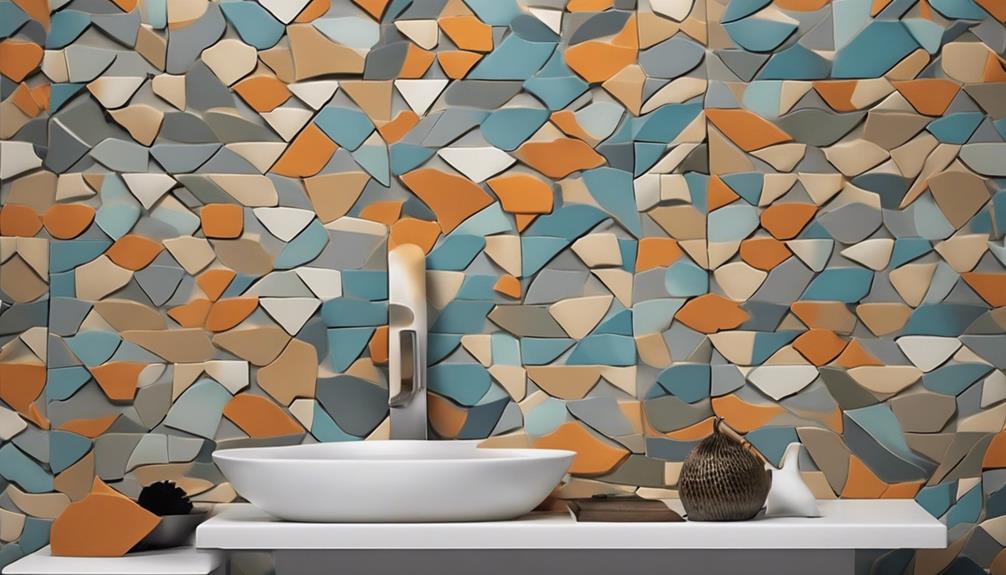
Experimenting with tiles in your home renovation project can bring a touch of sophistication and personality to your space. Here are some innovative ways to incorporate tiles into your design:
- Upgrade Your Kitchen with a Tile Backsplash: Installing a tile backsplash, like classic subway tile, can instantly elevate the look of your kitchen. It's a timeless and cost-effective option that adds a luxurious feel without breaking the bank.
- Create Visual Interest with Patterns and Focal Points: Tiles offer endless possibilities for creativity. Arrange them in unique patterns or use contrasting colors to create eye-catching focal points in your kitchen or bathroom, enhancing the overall aesthetic appeal of the space.
- Play with Shapes, Colors, and Textures: Don't be afraid to mix and match different tile shapes, colors, and textures. This experimentation can add depth and personality to your design, making your home feel more customized and stylish.
Install Decorative Molding
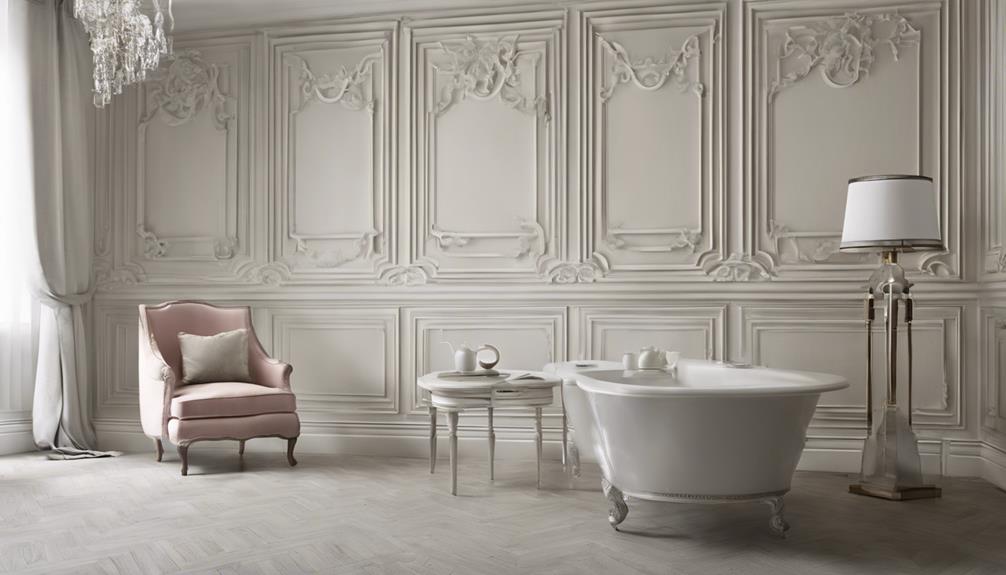
Let's enhance our home's aesthetic appeal by exploring the world of decorative molding.
From crown molding to chair rail molding, each type brings its unique charm to the walls.
We'll guide you on selecting the perfect style and provide expert tips for seamless installation.
Types of Molding
Decorative molding, a versatile design element, encompasses various types such as crown molding, chair rail molding, and baseboard molding, each serving to enhance the aesthetic appeal of walls and ceilings.
- Crown Molding: Adds a touch of sophistication to a room by creating a seamless transition between walls and ceilings.
- Chair Rail Molding: Not only protects walls from scuff marks caused by furniture but also acts as a stylish accent that can elevate the overall look of a space.
- Baseboard Molding: Covers the joint between the wall and the floor, giving a room a polished and finished appearance.
These molding types are essential for adding character and charm to your home with minimal effort.
Choosing the Right Style
As we explore the realm of decorative molding, our focus shifts towards the pivotal task of selecting the right style that will truly elevate the aesthetics of your living spaces.
When considering the front of your house, chair rail molding emerges as a fantastic option. This type of molding not only adds charm and character to your walls but also serves a functional purpose by breaking up large flat areas.
Chair rail molding is versatile and can adapt to different design styles, from traditional to modern, making it a perfect choice for those seeking both visual appeal and practicality.
Installation Tips
To achieve a seamless and professional look when installing decorative molding, consider starting the process by measuring and marking the walls accurately for precise placement. When installing decorative molding, here are some installation tips to keep in mind:
- Use a Miter Saw: Invest in a good quality miter saw to ensure clean and precise cuts for perfect corners.
- Secure Properly: Use a strong adhesive along with nails or screws to secure the molding firmly in place.
- Fill and Sand: After installation, fill any gaps and sand down rough edges for a flawless finish.
With these tips, your decorative molding will enhance the elegance of your space effortlessly.
Revamp Entryway
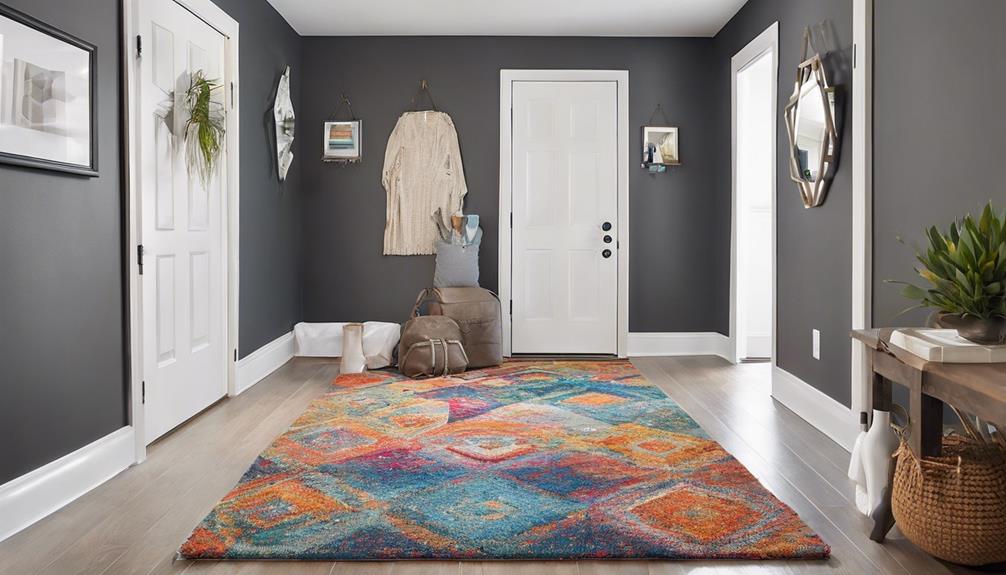
Enhance your entryway with a vibrant pop of color on the front door to instantly draw the eye and create a striking focal point. Choosing a bold color for your front door can completely transform the look of your home's entrance, making it more inviting and stylish. Pair this with colorful flowers, a new welcome mat, or a seasonal wreath to add a welcoming touch that reflects your personality.
In addition to painting the door, consider upgrading the door hardware for a modern look and improved functionality. Stylish lighting fixtures like sconces or pendants can also illuminate and beautify the entryway, creating a warm and inviting atmosphere. To add personality and style, think about installing a decorative mirror or artwork that complements the bold color of the door. These simple DIY tricks can revamp your entryway and make a lasting impression on your guests.
Showcase Artwork
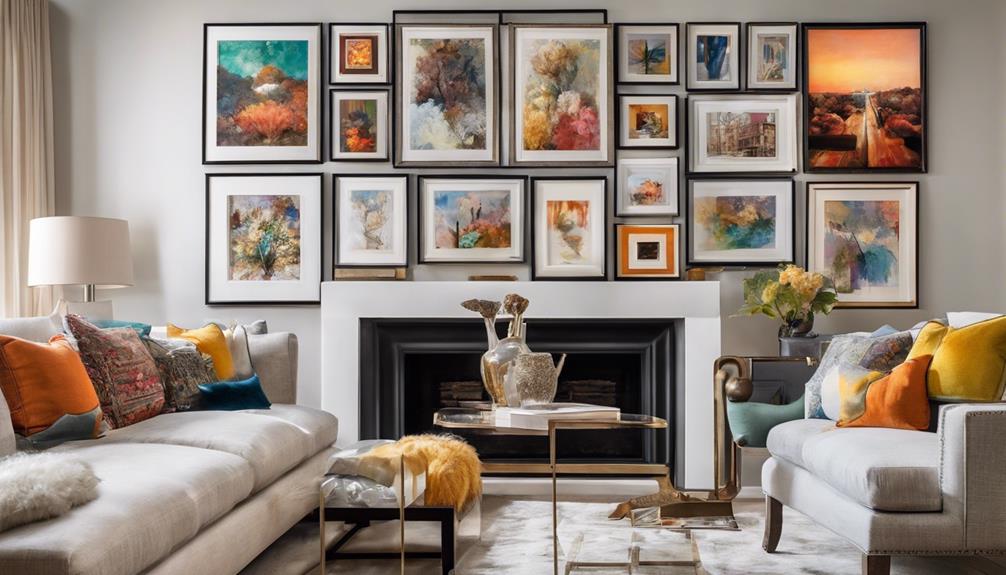
Let's turn our attention now to showcasing artwork as a way to elevate the room's aesthetic and create captivating focal points. When it comes to showcasing artwork, there are various creative ways to make your walls come alive and reflect your unique style.
Here are some innovative ideas to consider:
- Mix and Match: Experiment with different sizes, styles, and types of artwork to add depth and visual interest to your space. Create a custom gallery wall by combining various pieces that speak to you, whether they're paintings, photographs, or prints.
- Curated Display: Consider creating a custom gallery wall with a mix of frames and artwork for a curated look. This approach allows you to showcase a collection of pieces that complement each other while adding personality to your room.
- Personal Statement: Utilize artwork to reflect your personal style and add a touch of personality to the room. Choose pieces that resonate with you and evoke emotions, making your space feel uniquely yours.
Layer Textures
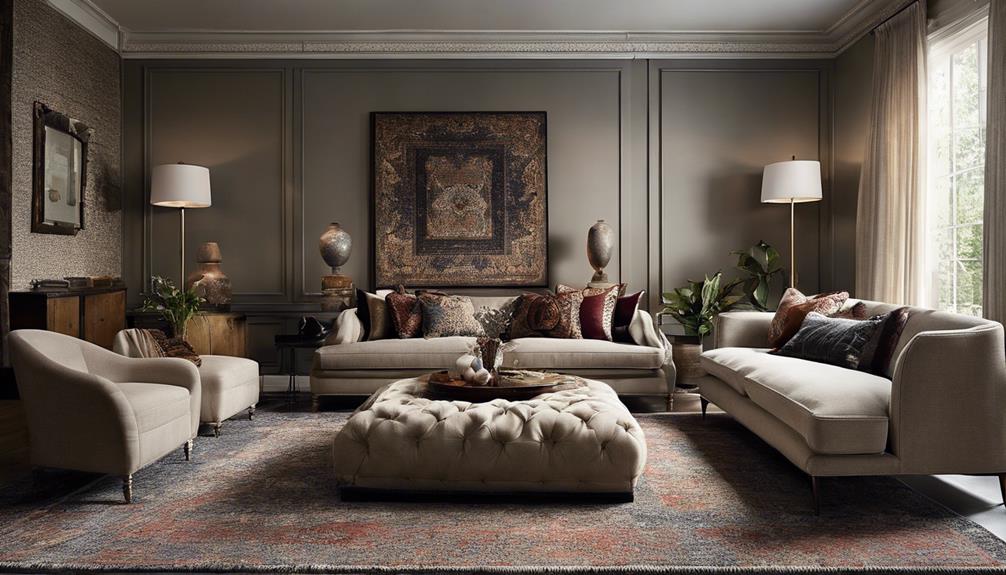
Incorporating a variety of textures in your home decor can instantly elevate the visual appeal of your space, creating a dynamic and inviting atmosphere. To make your house look less flat, layering textures is key. By combining materials like wood, metal, fabric, and glass, you can add depth and interest to your living areas.
Introduce different textures through elements such as throw pillows, rugs, curtains, and wall art to create a more dynamic feel. Consider incorporating luxurious textures like velvet, fur, jute, or leather to bring warmth and sophistication to your rooms. Mixing these textures can transform a flat-looking space into a cozy and visually appealing environment with character.
Experiment with contrasting textures to achieve a curated and stylish look. Embrace the art of layering textures to infuse your home with personality and charm, making it a place you love to spend time in.
Frequently Asked Questions
How Do I Make My House Feel High End?
We can make our house feel high end by incorporating neutral shades for an expensive and sophisticated look.
Updating lighting fixtures with modern pendant lights adds a contemporary touch.
Mimicking built-ins with bookcases creates a luxurious feel affordably.
Replacing hardware like towel bars and drawer pulls provides a quick and inexpensive update.
Adding a tile backsplash, especially subway tile, can give the kitchen an expensive look in a cost-effective way.
How Can I Make My Plain House Look Better?
We can make our plain house look better by adding shutters or awnings for dimension. Enhancing front steps and creating a walkway to the door can boost appeal.
Incorporating brick or flagstone adds texture. Professional landscaping with front gardens elevates curb appeal.
These improvements transform the exterior, making our home more inviting and visually appealing. By implementing these changes, our plain house can become a standout in the neighborhood.
How Can I Spruce up My House?
We can spruce up our house by adding dimension with shutters or awnings. Enhancing front steps for a better look is another great idea. Creating an inviting walkway to the entrance can also make a big difference. Incorporating textured elements like brick or flagstone adds character. Investing in professional landscaping with front gardens can further elevate the appearance of our home.
These simple yet effective DIY tricks can significantly enhance the overall appeal of our home and make it stand out in the neighborhood.
How Can I Decorate My House With Simple Things?
When decorating our house with simple things, we focus on creating a cozy and inviting atmosphere. By incorporating elements like colorful throw pillows, stylish rugs, and unique wall art, we effortlessly elevate our living space.
These small additions bring personality and character to each room, making our house feel like a warm and welcoming retreat. By combining these simple touches, we transform our space into a haven that reflects our style and creativity.
Conclusion
As we put the finishing touches on our flat-front house transformation, we can't help but feel a sense of excitement and anticipation. Each DIY trick we've implemented has added layers of character and charm to our home, setting the stage for a stunning reveal.
Stay tuned as we unveil the final look, showcasing how a little creativity and effort can truly make a house feel like a work of art. Get ready to be amazed!
- About the Author
- Latest Posts
Introducing Ron, the home decor aficionado at ByRetreat, whose passion for creating beautiful and inviting spaces is at the heart of his work. With his deep knowledge of home decor and his innate sense of style, Ron brings a wealth of expertise and a keen eye for detail to the ByRetreat team.
Ron’s love for home decor goes beyond aesthetics; he understands that our surroundings play a significant role in our overall well-being and productivity. With this in mind, Ron is dedicated to transforming remote workspaces into havens of comfort, functionality, and beauty.
Architecture Home Styles
Essential Elements for Creating a Beach House Oasis
Lure your senses into a coastal dreamland with the essential elements that transform a beach house into an enchanting oasis.
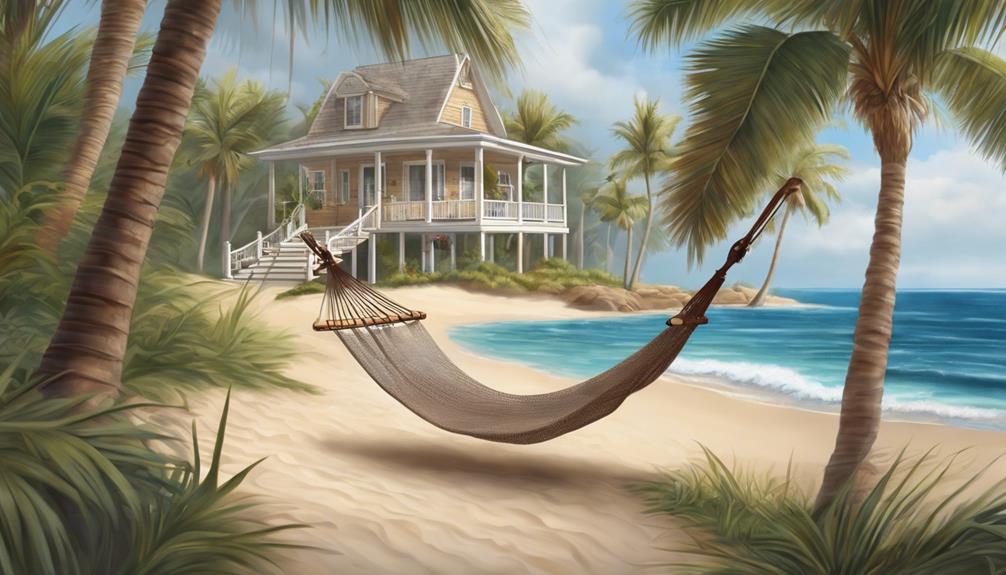
Picture this: the gentle sound of waves lapping against the shore as you relax on a sun-kissed deck, a cool breeze whispering through the palm trees.
Creating a beach house oasis requires careful consideration of elements that blend seamlessly to evoke a sense of tranquility and escape. From selecting the right materials to designing cozy nooks for lounging, each detail plays a crucial role in crafting the perfect coastal retreat.
But what truly makes a beach house oasis stand out? Let's explore together.
Key Takeaways
- Coastal color palette with natural textures for harmonious beach house vibes.
- Nautical theme incorporating marine elements for a classic seaside feel.
- Outdoor oasis elements like water features and plush seating for relaxation.
- Seaside decor with nautical accents and coastal-themed artwork for maritime charm.
Coastal Color Palette
In our quest to create a beach house oasis, we embrace a coastal color palette that harmoniously blends blues, whites, sandy tones, and natural wood finishes to infuse our space with a sense of serenity. By incorporating these coastal hues, we bring the essence of coastal living right into our home. To enhance the warmth and texture of our outdoor living area, we introduce pops of coral or turquoise as accent colors, adding visual interest and depth to the space. This blend of colors not only creates a soothing atmosphere but also reflects the beauty of the outdoors.
When designing our outdoor seating and dining areas, we ensure that the coastal decor flows seamlessly with the natural materials used. The warmth and inviting nature of the color palette make the outdoor space feel like an extension of the beach, inviting us to relax and unwind in style. By incorporating water elements, we further enhance the coastal theme, creating a tranquil ambiance that celebrates the beauty of outdoor living.
Natural Textures and Fabrics
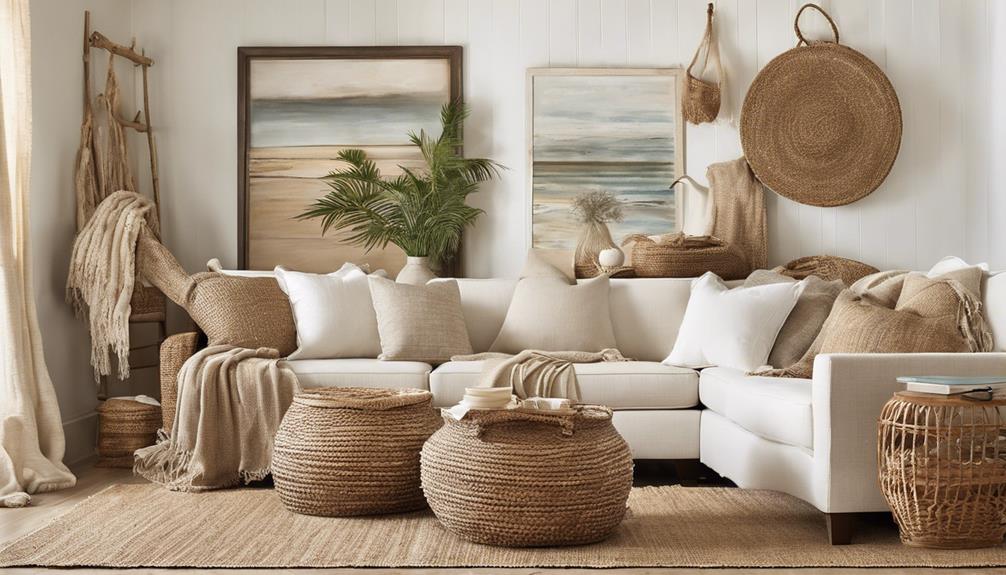
Embracing the coastal color palette sets the stage for our exploration of natural textures and fabrics. This introduces elements like jute, bamboo, and wicker to infuse our beach house oasis with a serene and beach-inspired vibe.
When it comes to creating an outdoor sanctuary, incorporating these organic materials brings a touch of the natural world into our living spaces. Opt for furniture with weathered wood finishes or driftwood accents, adding a rustic charm that complements the coastal theme effortlessly.
For a relaxed and comfortable ambiance, choose organic fabrics like cotton, linen, and hemp in sea-inspired colors and textures for rugs and throw pillows. This creates a sense of warmth and depth in every corner.
To allow the gentle coastal breeze and natural light to filter through seamlessly, select curtains or window treatments made from sheer fabrics. By incorporating these natural textures and fabrics, our beach house oasis will be a true haven of tranquility and style.
Nautical Accents
Exploring nautical accents infuses our beach house oasis with a charming coastal flair, evoking the essence of seaside living through elements like stripes, anchors, and marine-themed decor. To achieve this coastal look, we incorporate nautical decor in classic navy blue, white, and red color schemes. These colors perfectly complement the beach house's coastal theme, adding a touch of maritime elegance. Sailboat models and lighthouse decor not only enhance the ambiance but also bring character and charm to the space.
Rope accents are a fantastic way to tie in the nautical theme, adding texture and visual interest. Consider incorporating marine-themed artwork to bring the beauty of the sea indoors. These elements, combined with driftwood and ship wheels, create a cohesive beach house oasis that transports you to the shoreline. Anchor-printed throw pillows and sailcloth curtains further elevate the decor, while rope rugs add a touch of authenticity to the space. By embracing nautical accents, we transform our beach house into a maritime paradise.
Outdoor Relaxation Spaces
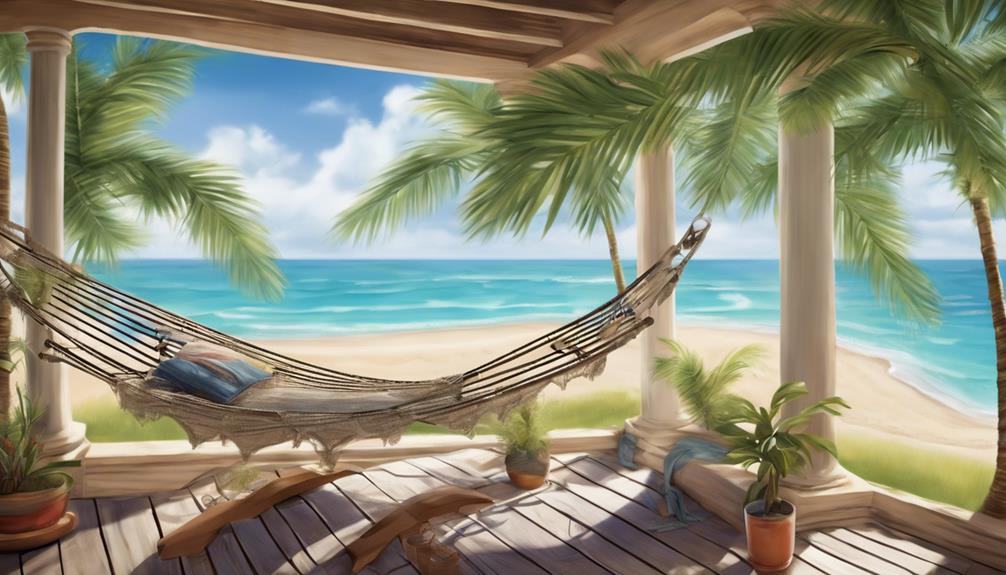
Our outdoor relaxation spaces at the beach house oasis beckon with plush seating areas and coastal-inspired comfort, perfect for unwinding under the sun.
The blend of comfortable seating like outdoor sofas and lounge chairs, adorned with fade-resistant outdoor fabrics in soothing coastal colors, creates a tranquil atmosphere.
To provide relief from the sun's rays, shade structures such as pergolas stand elegantly, offering a cool retreat while enjoying the outdoor space.
Water features like fountains or ponds add a touch of serenity to the surroundings, enhancing the overall relaxation ambiance.
For the ultimate outdoor oasis experience, consider incorporating a pool or spa into the beach house setting, elevating relaxation to new heights.
With a careful balance of comfortable seating, coastal aesthetics, shade structures, and water elements, our outdoor relaxation spaces promise a rejuvenating escape in a beachfront paradise.
Seaside-Inspired Decor
Amidst the coastal breeze, we infuse our beach house oasis with seaside-inspired decor, capturing the essence of a maritime retreat. To evoke a classic coastal vibe, we incorporate nautical elements like anchors, ropes, and ship wheels into our design scheme. The color palette of navy blue, white, and red sets the tone for a beach house aesthetic that's both timeless and refreshing.
Seashell collections, beach glass, and driftwood serve as decorative accents, bringing a touch of the seaside indoors. We adorn our space with striped patterns in textiles such as rugs, curtains, and throw pillows, adding a sense of movement and fluidity to the decor. Coastal-themed artwork featuring lighthouses, sailboats, or beach scenes adorns our walls, further enhancing the maritime ambiance.
With a keen eye for detail and a love for all things coastal, our seaside-inspired decor transforms our beach house into a sanctuary of relaxation and rejuvenation.
Frequently Asked Questions
What Are the Key Elements of Coastal Interior Design?
When considering coastal interior design, the key elements include a color palette of blues, whites, sandy tones, and natural wood finishes for a beachy vibe.
Textures play a vital role, creating depth through materials like rattan, jute, and linen.
Nautical elements, like stripes and marine-themed decor, enhance the coastal theme.
Pops of coral or turquoise in accent pieces add vibrancy.
Natural light is maximized to create a bright, breezy atmosphere reminiscent of beach living.
What Makes a Beach House Look Like a Beach House?
When we think of what makes a beach house look like a beach house, we envision pale colors, natural textures, and coastal accents.
Incorporating elements like bamboo blinds, wicker furniture, and a mix of textiles adds depth and warmth to the space.
Stripes in decor and a coastal color palette with sandy tones, blues, and greens enhance the beachy vibe. These details come together to create that unmistakable beach house ambiance we all love.
How to Design a Coastal Home?
When designing a coastal home, we blend pale colors, natural materials, and varied textures to evoke a beachy vibe. Our palette includes blues, whites, sandy tones, and vibrant coral or turquoise accents for a breezy feel.
We incorporate seaside elements like nautical decor, coral sculptures, and striped patterns for a cohesive look. Opt for functional furniture with durable fabrics and storage solutions to create a relaxed beach house ambiance.
How Do You Make Coastal Decor?
We make coastal decor by incorporating seashells, driftwood, and coral as decorative accents.
We use coastal-themed artwork like seascapes and beach scenes.
Additionally, we add textiles in beachy colors and choose accessories that reflect beach colors, textures, and themes.
These elements create a relaxing and inviting atmosphere in our beach house oasis.
Conclusion
As we wrap up our beach house oasis project, we can't help but be amazed by the power of design to transform a space into a serene retreat.
Did you know that according to a recent survey, 85% of people feel more relaxed and at peace when surrounded by coastal decor elements?
By incorporating essential elements like a coastal color palette, natural textures, nautical accents, and outdoor relaxation spaces, you can create your own beach paradise right at home.
- About the Author
- Latest Posts
Introducing Ron, the home decor aficionado at ByRetreat, whose passion for creating beautiful and inviting spaces is at the heart of his work. With his deep knowledge of home decor and his innate sense of style, Ron brings a wealth of expertise and a keen eye for detail to the ByRetreat team.
Ron’s love for home decor goes beyond aesthetics; he understands that our surroundings play a significant role in our overall well-being and productivity. With this in mind, Ron is dedicated to transforming remote workspaces into havens of comfort, functionality, and beauty.
Architecture Home Styles
Exploring the Difference Between Traditional and Classic Design
Kickstart your journey into the world of design by uncovering the subtle yet significant distinctions between traditional and classic styles, shaping your perception of timeless elegance.
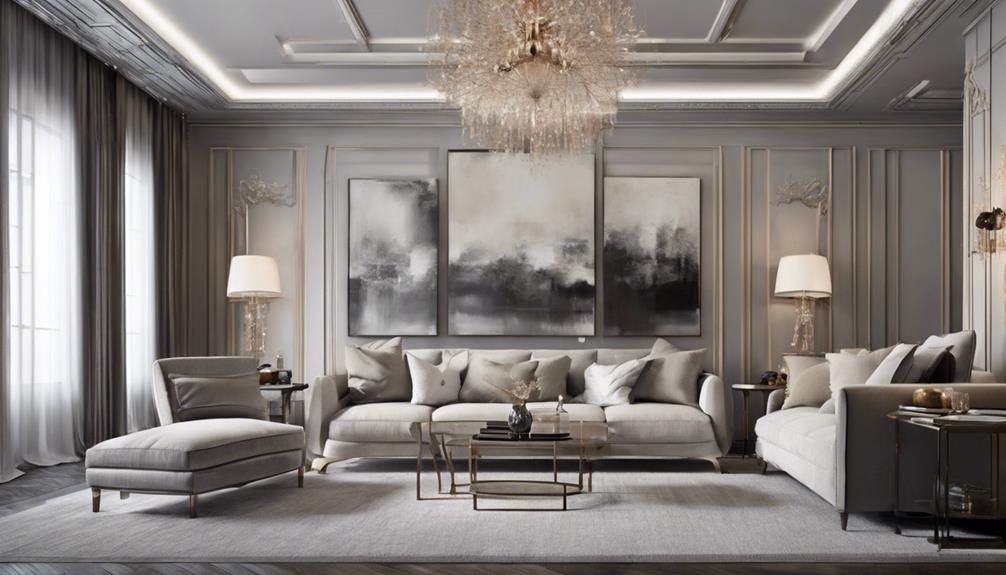
When considering traditional versus classic design, we uncover nuanced distinctions in style and aesthetic preferences. The interplay between historical influences and contemporary interpretations provides a fascinating insight into the evolution of design principles.
As we explore the intricate details and subtle nuances that set these two styles apart, it becomes evident that each offers a unique perspective on elegance and sophistication.
Stay tuned to unravel the intricacies that define the essence of traditional and classic design, shedding light on the nuances that shape our perception of timeless aesthetics.
Key Takeaways
- Traditional design features bold colors and intricate patterns, while classic design opts for soft and subdued colors for elegance.
- Both traditional and classic design styles focus on creating a balanced, inviting, and harmonious atmosphere.
- Traditional furniture embodies moderation and balance with solid wood, while classic furniture exudes nobility with gilded finishes.
- Lighting in traditional design aims for warmth and coziness, while classic design creates a luxurious ambiance with ornate fixtures.
Key Elements in Traditional Design
In traditional design, we intricately weave together elements of moderation, elegance, and balance to create a timeless aesthetic inspired by the rich European design traditions of the 18th and 19th centuries. Solid wood plays a pivotal role in this style, exuding warmth and coziness throughout the space. The choice of fabrics like cotton, leather, and velvet further enhances the comfort aspect, inviting you to sink into luxurious textures. Lighting is carefully curated to emanate a soft and inviting glow, achieved through the use of ambient sources such as table lamps and floor lamps, setting a cozy ambiance.
The color palette in traditional design is a symphony of rich colors like deep reds, lush greens, and vibrant yellows, adding depth and character to the space. These hues evoke a sense of opulence and sophistication, harmonizing beautifully with the overall design scheme. The blend of these elements creates a space that not only exudes elegance but also envelops you in a sense of comfort and luxury.
Characteristics of Classic Design
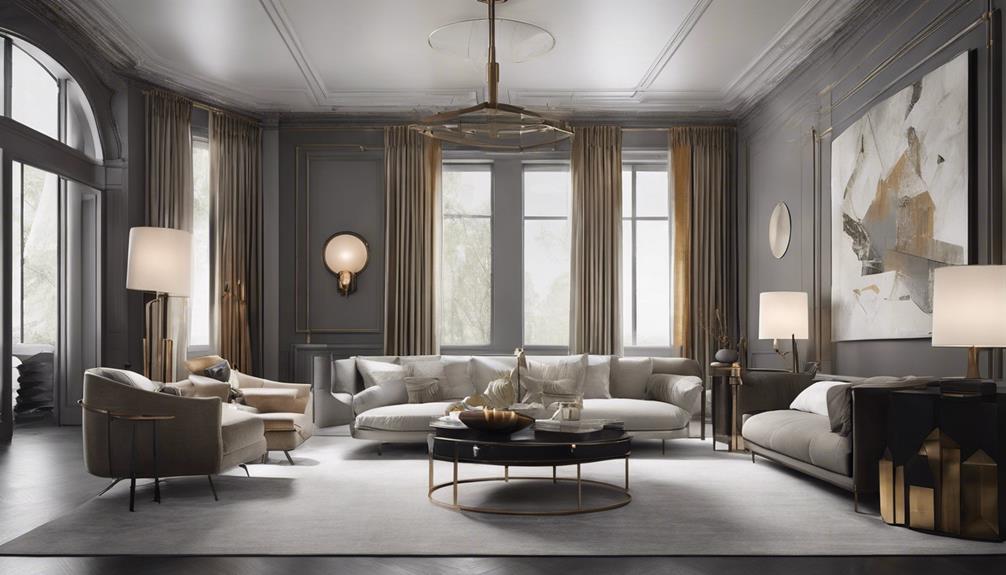
Transitioning from the rich tapestry of traditional design, classic design embodies a timeless allure through its emphasis on neutral hues, enduring furniture pieces, and ageless patterns. Classic design is about creating a space that feels elegant and sophisticated, never going out of style. This style incorporates traditional furniture pieces like wingback chairs and claw-foot tables, showcasing intricate details and a focus on symmetry. Antique or vintage items are often integrated into classic interiors to enhance the sense of heritage and history. Natural materials such as wood and marble play a significant role in classic design, adding a touch of authenticity and luxury. The use of neutral colors like beige, ivory, and taupe creates a serene and calming atmosphere, perfect for those who appreciate a refined aesthetic. Classic design is about capturing the essence of timeless beauty and creating a space that exudes grace and elegance.
| Characteristics | Description | Example |
|---|---|---|
| Neutral Colors | Create a serene atmosphere | Beige, Ivory, Taupe |
| Traditional Furniture | Emphasize heritage and sophistication | Wingback chairs, Claw-foot tables |
| Intricate Details | Showcase fine craftsmanship | Ornate carvings, Embossed patterns |
| Natural Materials | Add authenticity and luxury | Wood, Marble, Leather |
| Timeless Patterns | Enhance the sense of elegance | Damask, Toile, Houndstooth |
Color Palette Variances
Let's delve into the captivating interplay of colors in traditional and classic design, unveiling their distinct palettes and the emotions they evoke within interior spaces.
Traditional design is known for its bold use of color, incorporating rich tones like red, green, and yellow to create a lively and accented color palette. In contrast, classic design opts for a more subdued approach, favoring neutral and soft colors that convey timeless sophistication and elegance. Both styles share a common emphasis on proportion and harmony when selecting colors, ensuring a visually pleasing aesthetic within the space.
Classic design often showcases prestigious materials with subtle contrasts, exuding an air of understated luxury. On the other hand, traditional design tends to embrace vibrant colors and intricate patterns, adding a sense of energy and warmth to the room. The careful selection of color palettes in traditional and classic design plays a vital role in shaping the overall ambiance and character of the interior, showcasing a harmonious blend of elegance, proportion, and timeless sophistication.
Differences in Furniture Styles
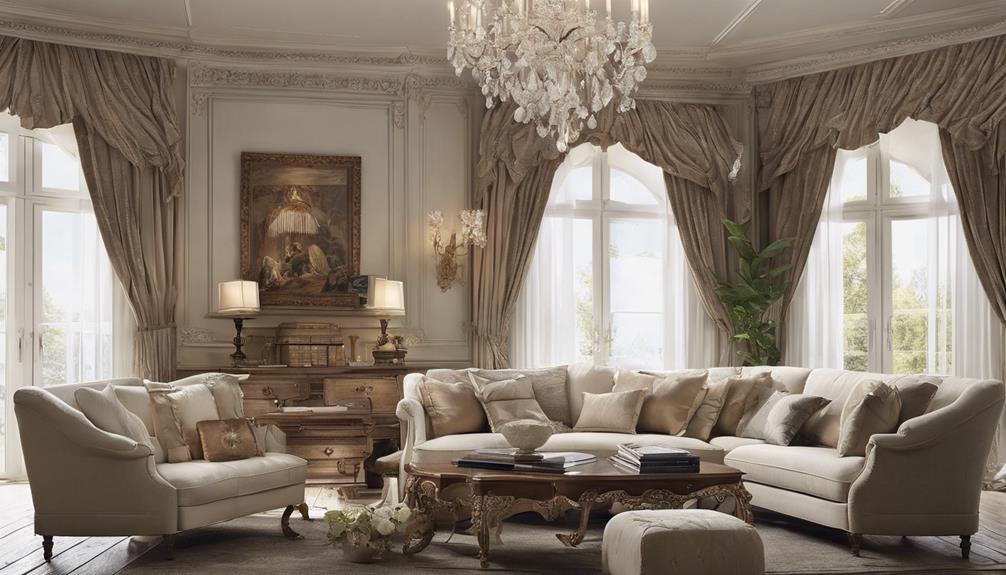
Embarking on a journey through the realm of interior design, we are met with a striking divergence in furniture styles between traditional and classic design aesthetics. Traditional furniture in European design, originating from the 18th and 19th centuries, embodies moderation, elegance, and balance. On the other hand, classic furniture exudes noble atmospheres with pomposity, showcasing prestigious materials like oak, mahogany, ceramic, marble, gold, and silver finishes.
| Traditional Furniture | Classic Furniture |
|---|---|
| Rooted in European design | Exudes ethereal nobility |
| Favoring moderation | Prestigious materials |
| Warmth and coziness | Gilded and opulent |
In traditional style, harmony is achieved through blending various elements, offering warmth and coziness with solid wood furniture and fabrics like cotton, leather, and velvet. In contrast, classic style features gilded finishes and gold leaf for a luxurious look, emphasizing richness and opulence. These styles also extend into lighting design, with traditional opting for warmer and softer lighting, creating a cozy feel with ambient lighting solutions like table lamps and floor lamps, while classic style leans towards ornate chandeliers and sconces for a grandiose touch.
Lighting Design Variances
As we delve into the realm of lighting design variances, a captivating interplay emerges between classic and traditional interior styles, each illuminating spaces with unique charm and character. Classic design exudes richness and opulence through lighting fixtures like grand chandeliers and intricately detailed sconces. These ornate details in classic lighting fixtures create a luxurious ambiance, evoking a sense of grandeur and sophistication within a space.
On the other hand, traditional design takes a softer approach, opting for warmer and cozier lighting solutions such as table lamps and floor lamps. The emphasis in traditional design is on creating a welcoming and comfortable environment, where ambient lighting plays a pivotal role in setting the mood. This style aims to promote a sense of intimacy and relaxation, steering away from the grandiose nature of classic design.
Both classic and traditional design styles strive for elegant lighting options that not only serve a functional purpose but also enhance the overall ambiance of a room. Whether it's the opulence of classic chandeliers or the cozy feel of traditional table lamps, lighting design plays a crucial role in shaping the character of a space.
Frequently Asked Questions
How Is Traditional Design Different From Modern Design?
Traditional design differs from modern design in various aspects.
We see traditional design focusing on warmth and rich colors like red and green, while modern design emphasizes sleek lines and minimalism.
Traditional design incorporates natural materials like wood for a cozy atmosphere, whereas modern design utilizes innovative materials for a contemporary look.
The former favors classic furniture with intricate details, while the latter features unique furniture and cutting-edge designs.
What Is the Definition of Traditional Design?
When it comes to traditional design, it's like stepping into a cozy retreat filled with elegant charm. Rich colors like red, green, and yellow dance together, creating a lively palette.
Classic lines and solid wood furniture greet you warmly, while fabrics like cotton and velvet whisper comfort and luxury. It's a timeless style that wraps you in a familiar embrace, making every corner of your home feel like a cherished memory.
What Is the Difference Between Modern Design and Classic Design?
When it comes to modern design and classic design, the distinction lies in their contrasting aesthetics.
Modern design embodies sleek lines and cutting-edge materials, reflecting a contemporary and innovative vibe.
In contrast, classic design exudes elegance and timeless sophistication with its traditional furniture and luxurious details.
These two styles offer a unique blend of old-world charm and futuristic elements, catering to different tastes and preferences in the world of design.
What Is the Difference Between Modern and Classic Home Design?
When it comes to modern and classic home design, the distinction lies in their essence.
Modern design embodies innovation and creativity with sleek lines and cutting-edge materials, ideal for those seeking a contemporary aesthetic.
Classic design, on the other hand, exudes elegance and sophistication through timeless pieces and intricate details, appealing to those who value tradition and refinement in their living spaces.
These contrasting styles offer unique choices for expressing personal taste and style preferences.
How Does Traditional Design Differ from Classic Design in Terms of Aesthetics and Functionality?
Traditional design encompasses a more ornate and intricate aesthetic, while classic design focuses on simplicity and elegance. In terms of functionality, traditional design often prioritizes practicality, while classic design may incorporate more decorative elements. The main difference between modern design and traditional design lies in their approach to aesthetics and practicality.
Conclusion
As we wrap up our exploration of traditional and classic design, it's clear that these styles offer unique and distinct characteristics. From the cozy warmth of traditional design to the timeless elegance of classic design, each style brings its own charm and sophistication to any space.
Whether you prefer the rich colors and intricate details of traditional design or the opulent finishes and neutral palettes of classic design, there's no doubt that both styles can create a truly stunning and inviting atmosphere.
So, which style speaks to you?
- About the Author
- Latest Posts
Introducing Ron, the home decor aficionado at ByRetreat, whose passion for creating beautiful and inviting spaces is at the heart of his work. With his deep knowledge of home decor and his innate sense of style, Ron brings a wealth of expertise and a keen eye for detail to the ByRetreat team.
Ron’s love for home decor goes beyond aesthetics; he understands that our surroundings play a significant role in our overall well-being and productivity. With this in mind, Ron is dedicated to transforming remote workspaces into havens of comfort, functionality, and beauty.
-

 Vetted5 days ago
Vetted5 days ago15 Best Boxwood Varieties for Thriving in Full Sunlight
-

 Decor2 hours ago
Decor2 hours agoAre Home Decor Stores Profitable?
-

 Vetted1 week ago
Vetted1 week ago15 Best Ways to Label Clothes for Nursing Home Residents – Stay Organized and Efficient
-

 Vetted6 days ago
Vetted6 days ago15 Best Dryer Vent Hoses to Keep Your Laundry Room Safe and Efficient
-

 Vetted6 days ago
Vetted6 days ago15 Best Spider Sprays to Keep Your Home Arachnid-Free
-

 Vetted5 days ago
Vetted5 days ago14 Best Cleaners for Aluminum Surfaces – Shine Bright Like a Diamond
-

 Vetted6 days ago
Vetted6 days ago15 Best Nightstand Charging Stations to Keep Your Devices Organized and Ready to Go
-
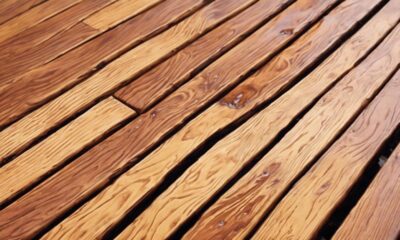
 Vetted1 day ago
Vetted1 day ago15 Best Ways to Waterproof Wood for Ultimate Protection and Longevity





